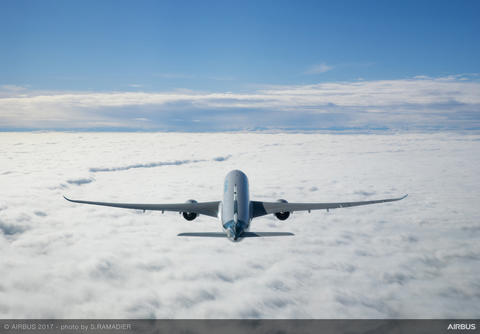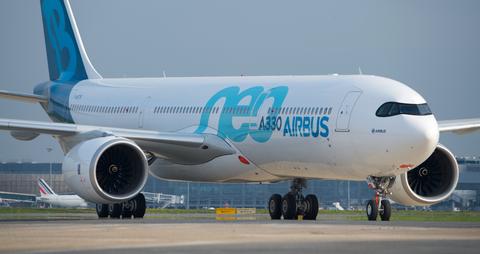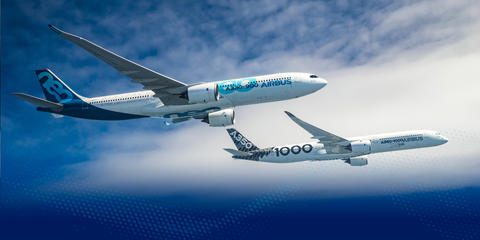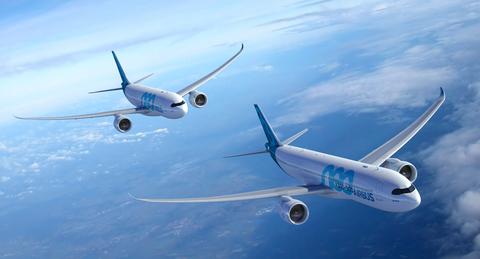When the first A330neo aircraft took to the skies, it marked the latest use of Airbus’ winglets – those graceful-looking upturned wing tip extensions.
Three-dimensional winglets with a vertical element, such as those on the A330neo, and also seen on the A350, increase the effective span of a wing without increasing the geometrical wingspan. On the A330neo the tip-to-tip span is 64m, but with the vertical height of 1m included, the span is effectively 65m, therefore providing a weight-efficient solution to further reduce fuel burn and CO2 emissions.
Pioneering airliner wing tip devices at Airbus
Airbus’ first use of wing tip devices in commercial air transportation began with the A300-600 and the A310-300. Both of these widebody jetliners – then cornerstones of the company’s product line – were outfitted with wing tip fences, arrow-shaped vertical attachments that extended above and below the end of the wing.
The experience gained with the A300/A310 was applied to the fences integrated later on Airbus’ single-aisle A320 Family, followed by the incorporation of larger wing tip devices on the A330, A340, and very large fences on the A380.
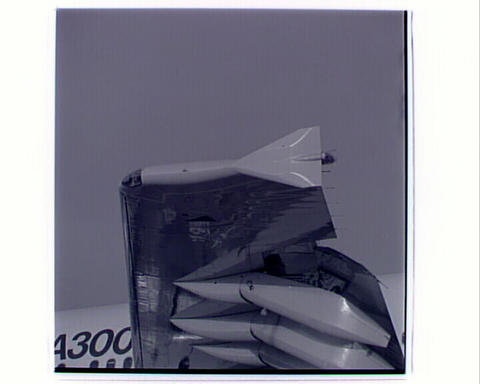
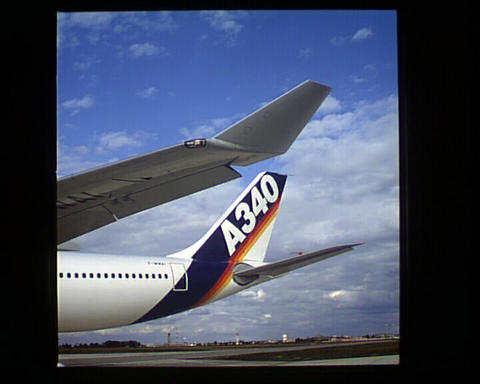
Sharklet evolution for A320 Family
Airbus’ next wing tip evolutions were called Sharklets, developed from 2004; the 2.4-metre-tall surfaces developed for A320 Family aircraft. Replacing the earlier fences, the new large winglets have proven to reduce the A320 Family’s fuel burn by up to four per cent while reducing CO2 emissions annually by as much as 900 tonnes per aircraft. Sharklets now come as standard on all A320neo Family aircraft.
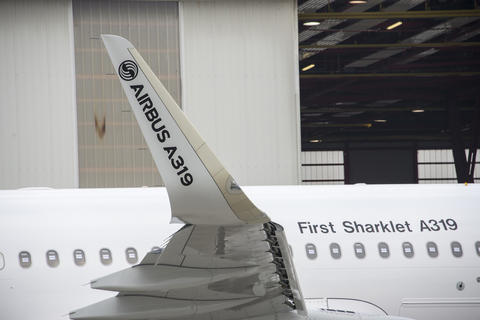
Large blended devices for A350 and A330neo
Up until now, winglets were visibly and mechanically distinct from the main wing. One could clearly see that they were separate structures which were attached to the end of the straight horizontal end of the wing. This markedly changed with the A350, which first flew in 2013. Here the winglet ‘grew-out’ of the main wing, curving progressively rearwards like a shark's fin but also progressively upwards out of the plane of the main wing, thus presenting a smooth three-dimensional twisting of the basic wing shape.
A few years later, the same Airbus team in Filton, UK, who designed the A350’s winglets, applied their skills to create the A330neo’s large curved devices. For the A330neo, this large new winglet is seamlessly integrated with a new horizontally extended outer span wing section made from CFRP - and together they extend the aircraft’s overall geometric wingspan to 64m (compared with 60.3m for the A330ceo).
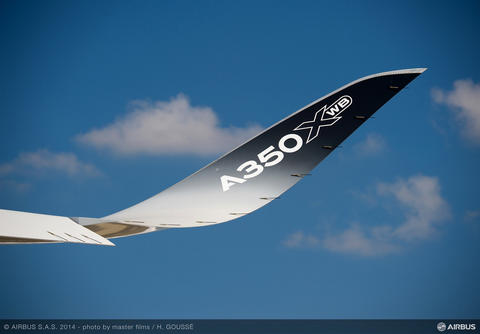
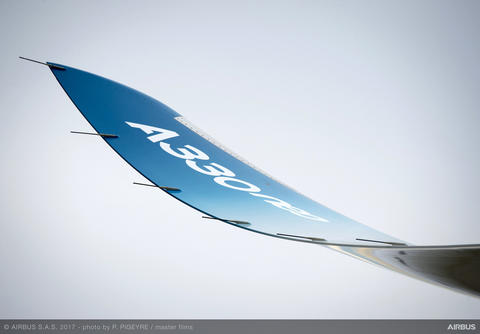
Aerodynamic and performance benefits
As with all wing tip devices used on Airbus aircraft, since those first used on the A300-600 and A310-300 to the present, they allow the aircraft to capture more of the oncoming airflow, as well as maintaining the pressure differential between the lower surface of the wing tip (high pressure) and the upper surface (low pressure). The net result is to improve the overall lifting efficiency of the wing -- ie producing more lift with less drag. Moreover, it’s not just cruise drag which they help to minimise. Wing tip devices also provide benefits in climb performance, so fuel is saved, less CO2 emitted and noise emission is lowered. Therefore engineers design their wing tip devices for maximum performance in both high speed (cruise) and low speed (take-off/climb and landing) flight phases – it’s a balance.
Furthermore, advanced materials and more active control of loads allows higher spans and larger wing tip devices – such as Airbus achieved when evolving from the A330ceo to the A330neo, and to do so without introducing large structural weight increases.
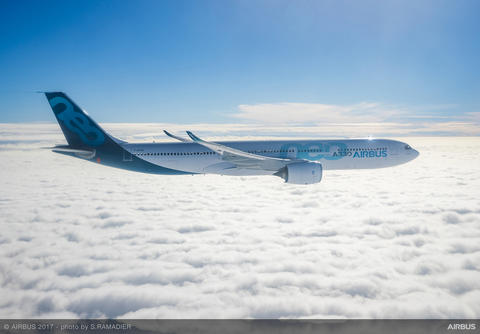
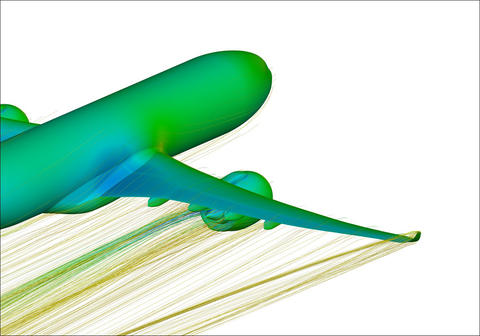
CFD modelled and integrated into complete ‘lifting system’
It should be noted that when the Airbus wing engineering team designed the winglet for the A330neo, it was not treated in isolation. Rather, it was visualised and modelled using computational fluid dynamics (CFD) in 3D as an integral component of the whole ‘lifting system’ (likewise for the A350). In the case of the A330neo, this lifting system comprises not just the main wing based on the A330ceo and the winglet, but also the relevant influences on the lift distribution coming from the wing/belly intersection and the engine and various fairings along the wing. Accordingly, the optimisation of the lifting system involved not just the new winglet design but also adjustments to the rest of the lifting system including tuning of the twist of the wing and adjustments to the settings of the ailerons in order to modify the wing camber. This integrated approach helped to ensure the best possible lift-to-drag ratio. In turn this ensures an ideal loading from root to tip.


